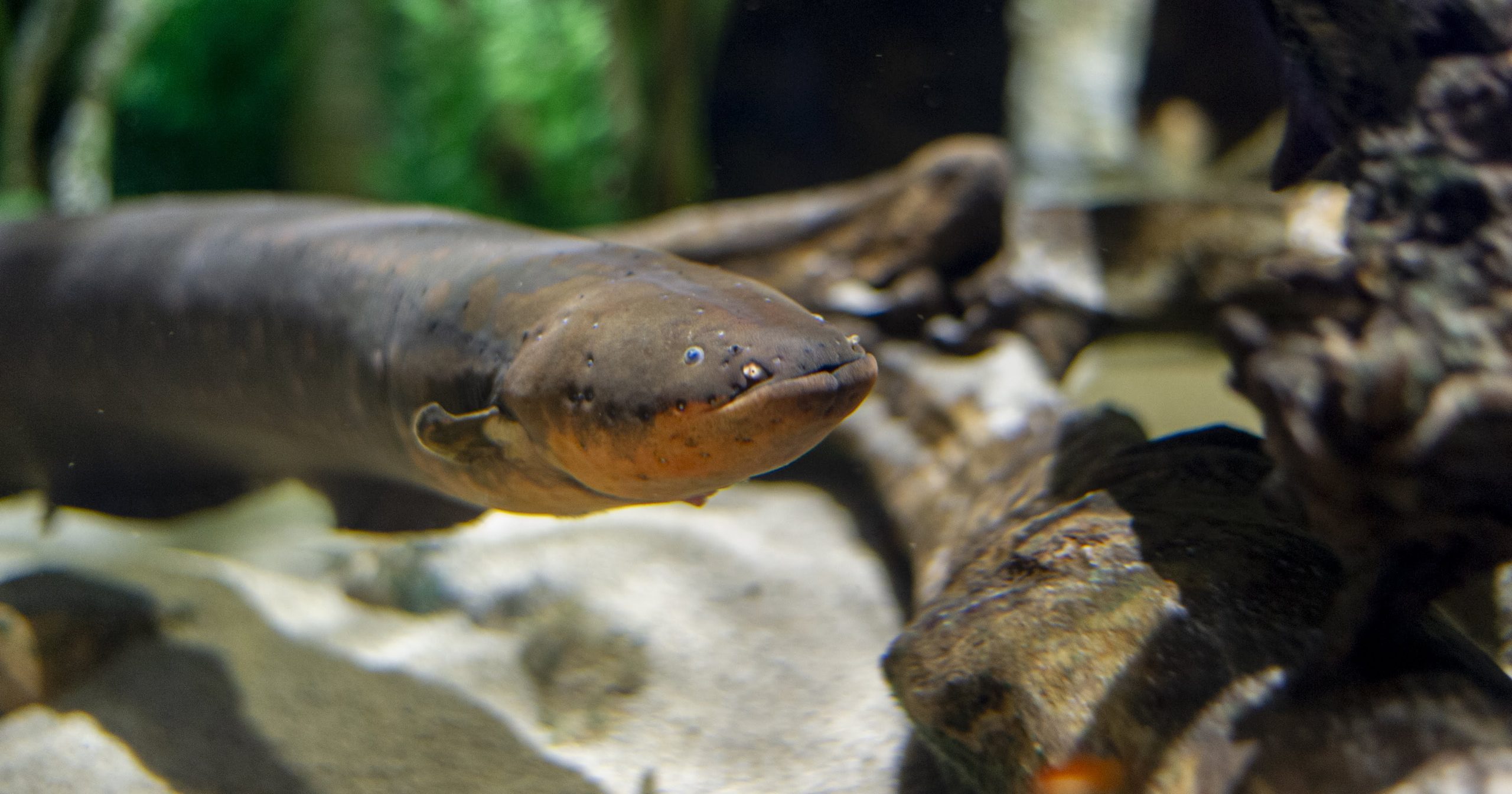Chattanooga, Tenn. (January 16, 2015) – The Tennessee Aquarium’s Electric Eel, Miguel Wattson (@EelectricMiguel), is now the conductor of his very own Twitter account. As shocking as it may seem, this fish uses his unique abilities to trigger tweets. “In the wild, Electric Eels use their voltage to navigate, stun prey and as a defense mechanism,” said Aquarist Brad Thompson. “They have complete control of their discharges varying the amount of energy released to meet their needs.”
The Electric Eel has three different electric producing organs in its body: the main organ, the Hunter’s organ and the Sach’s organ. Thousands of cells called electrocytes are stacked together to form these organs. These produce two different electric organ discharges, a high voltage discharge and a low voltage discharge.
The main organ and the Hunter’s organ are used to generate the high voltage discharge which can pack quite a punch. Researchers have measured discharges in excess of 800 volts! That’s about eight times the volts in a household outlet.
The Sach’s organ is used to produce a low voltage discharge of approximately 10 volts. This low volt discharge is used for electrolocation. “It allows the eel to locate prey and to sense its environment,” said Thompson. “It’s a handy trick for an animal with small eyes that lives in very murky water in the Amazon and Orinoco River basins of South America.”
Since Electric Eels are marvels of nature, the Aquarium’s new habitat includes interactive interpretation.
Probes in the water detect the Electric Eel’s discharges. The leads are connected to an amplifier and LED meter. Even though the eel doesn’t power this system, the display helps Aquarium guests better understand how Electric Eels vary their underwater bursts of electricity.
When at rest, Miguel discharges very little voltage. But whenever he’s moving or feeding….ZAP! ZAP! ZAP!….this display sounds like a thunderstorm. And, that’s when a light bulb appeared overhead. If an Electric Eel’s energy can be monitored and represented on a display in the Aquarium, why not harness this flow of extra electrons to spark conversations about eels, freshwater fishes and energy conservation with a worldwide audience via Twitter?
A team of “Power Rangers” from Tennessee Tech’s Business Media Center were energized by the challenging aspects of this mission. “This was a really fun project for our multi-disciplinary team,” said Kevin Liska, director, of the Business Media Center at Tennessee Tech University. “They combined electrical engineering and emerging business communication to give the eel a voice.”
Since the Aquarium’s Electric Eel discharges at least a little bit of energy most of the time, he has the capacity to Tweet A LOT. So the Tennessee Tech team devised a computer-coded “fuse box” to make sure Miguel doesn’t break the Internet with a steady stream of fun and enlightening information. “Ironically, the eel code was written in Python,” said Evgeny Vasilyev, a computer science intern at TTU’s Business Media Center. “The project’s main set piece was Raspberry Pi, a low cost computer which provides all of the necessary functionality in a compact package.”
Tennessee Aquarium fans will have fun following Miguel’s feed, especially while in the Rivers of the World Gallery. They can keep one eye on the Electric Eel’s home and the other on Twitter to see if the most recent jolt of energy has enough amperage to trigger a Tweet.
Five Shocking Facts about Electric Eels:
– The Electric Eel (Electrophorus electricus) is actually not an eel at all, it is a knifefish. It is in the family Gymnotidae, also known as the naked-back knifefishes.
– Electric Eels are obligate air breathers. They gulp air from the surface, giving them the ability to live in poorly oxygenated waters.
– Electric Eels have three different electric producing organs made up of cells called electrocytes.
– Large Electric Eels can vary the amount of voltage released between 10 and 850 volts!
– One big jolt from an Electric Eel could light up 20, 40-watt DC light bulbs for an instant!
